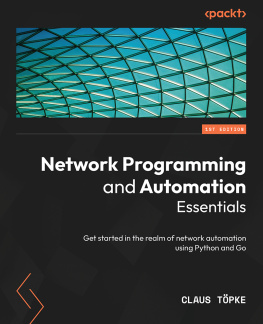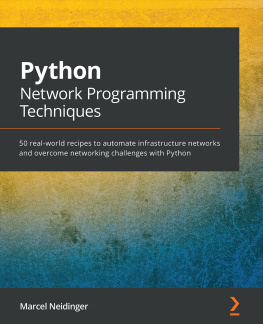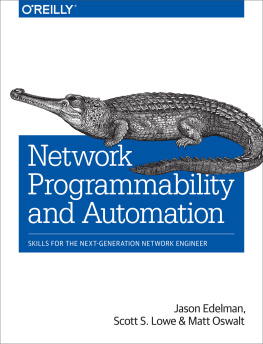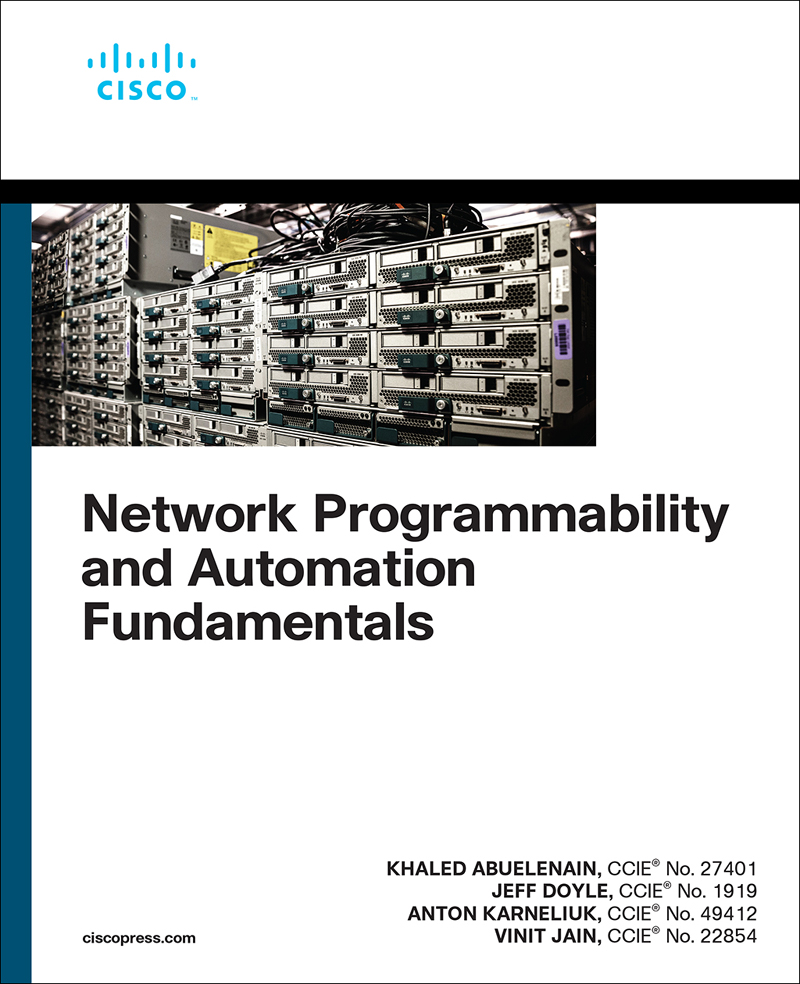Khaled Abuelenain - Network Programmability and Automation Fundamentals (Networking Technology)
Here you can read online Khaled Abuelenain - Network Programmability and Automation Fundamentals (Networking Technology) full text of the book (entire story) in english for free. Download pdf and epub, get meaning, cover and reviews about this ebook. year: 2021, publisher: Cisco Press, genre: Romance novel. Description of the work, (preface) as well as reviews are available. Best literature library LitArk.com created for fans of good reading and offers a wide selection of genres:
Romance novel
Science fiction
Adventure
Detective
Science
History
Home and family
Prose
Art
Politics
Computer
Non-fiction
Religion
Business
Children
Humor
Choose a favorite category and find really read worthwhile books. Enjoy immersion in the world of imagination, feel the emotions of the characters or learn something new for yourself, make an fascinating discovery.

- Book:Network Programmability and Automation Fundamentals (Networking Technology)
- Author:
- Publisher:Cisco Press
- Genre:
- Year:2021
- Rating:5 / 5
- Favourites:Add to favourites
- Your mark:
Network Programmability and Automation Fundamentals (Networking Technology): summary, description and annotation
We offer to read an annotation, description, summary or preface (depends on what the author of the book "Network Programmability and Automation Fundamentals (Networking Technology)" wrote himself). If you haven't found the necessary information about the book — write in the comments, we will try to find it.
Legacy network management approaches dont scale adequately and cant be automated well. This guide will help meet tomorrows challenges by adopting network programmability based on Application Programming Interfaces (APIs). Using these techniques, you can improve efficiency, reliability, and flexibility; simplify implementation of high-value technologies; automate routine administrative and security tasks; and deploy services far more rapidly.
Four expert authors help you transition from a legacy mindset to one based on solving problems with software. They explore todays emerging network programmability and automation ecosystem; introduce each leading programmable interface; and review the protocols, tools, techniques, and technologies that underlie network programmability. Youll master key concepts through hands-on examples you can run using Linux, Python, Cisco DevNet sandboxes, and other easily accessible tools.
This guide is for all network architects, engineers, operations, and software professionals who want to integrate programmability into their networks. It offers valuable background for Cisco DevNet certificationand skills you can use with any platform, whether you have software development experience or not.
- Master core concepts and explore the network programmability stack
- Manage network software and run automation scripts in Linux environments
- Solve real problems with Python and its Napalm and Nornir automation frameworks
- Make the most of the HTTP protocol, REST architectural framework, and SSH
- Encode your data with XML, JSON, or YAML
- Understand and build data models using YANG that offer a foundation for model-based network programming
- Leverage modern network management protocols, from gRPC and gNMI to NETCONF and RESTCONF
- Meet stringent service provider KPIs in large-scale, fast-changing networks
- Program Cisco devices running IOS XE, IOS XR, and NX-OS as well as Meraki, DNA Center, and Webex platforms
- Program non-Cisco platforms such as Cumulus Linux and Arista EOS
- Go from zero to hero with Ansible network automation
- Plan your next steps with more advanced tools and technologies
Khaled Abuelenain: author's other books
Who wrote Network Programmability and Automation Fundamentals (Networking Technology)? Find out the surname, the name of the author of the book and a list of all author's works by series.








 Cisco and the Cisco logo are trademarks or registered trademarks of Cisco and/or its affiliates in the U.S. and other countries. To view a list of Cisco trademarks, go to this URL: www.cisco.com/go/trademarks. Third party trademarks mentioned are the property of their respective owners. The use of the word partner does not imply a partnership relationship between Cisco and any other company. (1110R)
Cisco and the Cisco logo are trademarks or registered trademarks of Cisco and/or its affiliates in the U.S. and other countries. To view a list of Cisco trademarks, go to this URL: www.cisco.com/go/trademarks. Third party trademarks mentioned are the property of their respective owners. The use of the word partner does not imply a partnership relationship between Cisco and any other company. (1110R)